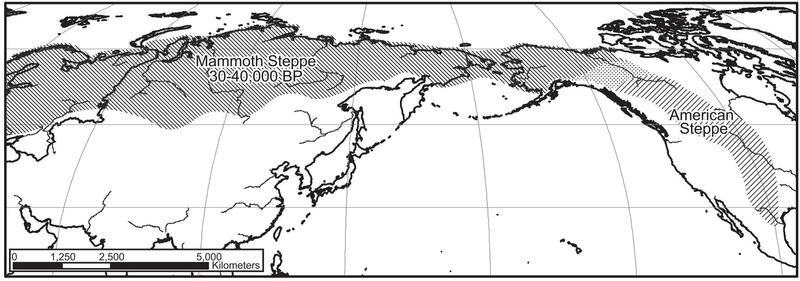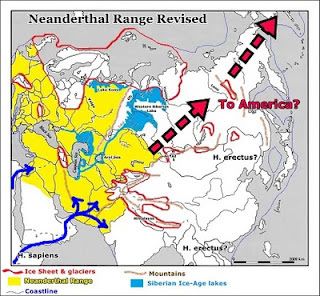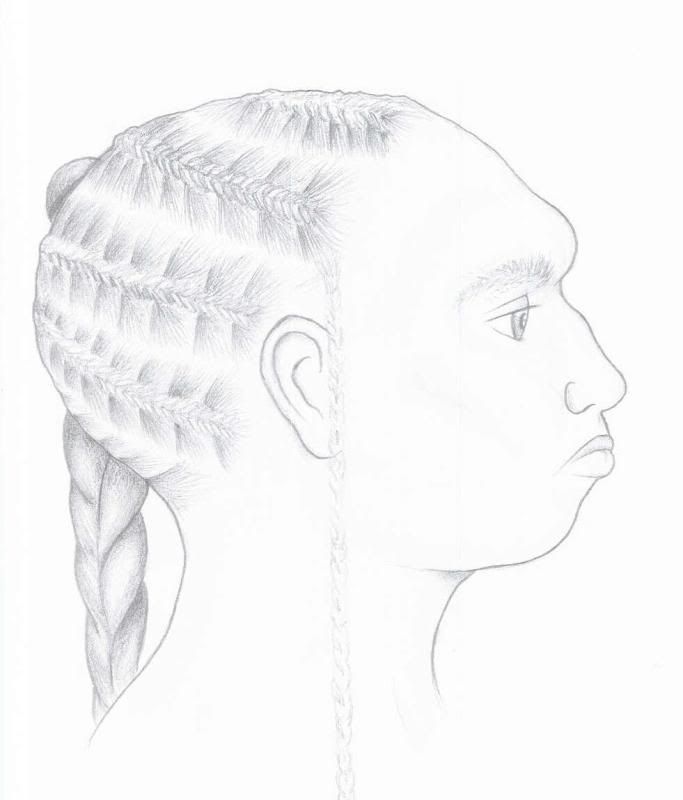http://www.sott.net/article/310308-Huma ... o-be-thereHuman-made marks on mammoth bones show that humans had already populated the Arctic as early as 45,000 years ago, a team of researchers from the Russian Academy of Sciences reports. That would put our species in that region 10,000 years earlier than any previous evidence has shown.
The latest evidence comes from a single mammoth carcass, first discovered in August 2012, not far from a weather station in Sopochnaya Karga, an area of Russia that stretches further north than the northernmost points of Scandinavia. That summer, a student was walking along the river bank when he spotted bones in an exposed bluff. The Mammoth Committee of the Russian Academy of Sciences was notified and, that fall, a team arrived to excavate the carcass . . .
As they examined the carcass, Pitulko and his colleagues found other evidence of injuries. There was a small, round hole on one skull bone. There was another injury on a right rib. The mammoth had been hit multiple times in its shoulder blade. Those injuries all happened when the mammoth was alive, but there were signs of damage after its death, too. Its jawbone, for instance, was broken, and its tusks had been modified.
These injuries were not consistent with a bone disease or with a non-human carnivore, according to Pitulko. The hole on the skull bone, for instance, was created by some sort of sharp, pointed tool.
"We were absolutely certain about human involvement into the death of the animal," he says. "It was killed, clearly. Except we did not know when."
By dating both the bones and the stratigraphical layers of earth in the place where the carcass had been found, the team was able to establish its age. The layers of earth above the mammoth carcass were in the vicinity of 35,000 years old, which meant the mammoth carcass itself would be even older. Carbon dating the tibia bone gave the team an age of approximately 45,000 years before the present.
Humans in Siberia 45K Years Ago
Moderators: MichelleH, Minimalist, JPeters
-
uniface
Humans in Siberia 45K Years Ago
Re: Humans in Siberia 45K Years Ago
That is pretty long ago!
Re: Humans in Siberia 45K Years Ago
Radiocarbon dating becomes nearly useless at 40,000 years ago plus since the amount of C-14 in the sample at that age is less than 1% due its half-life being 5,700 years. I'm not sure what those Russian scientists were thinking, but it might be a good idea to try another dating technique. The item sampled could just have easily been 35-40,000 years old, but that wouldn't make a great looking headline!Human-made marks on mammoth bones show that humans had already populated the Arctic as early as 45,000 years ago, a team of researchers from the Russian Academy of Sciences reports. That would put our species in that region 10,000 years earlier than any previous evidence has shown.
Natural selection favors the paranoid
Re: Humans in Siberia 45K Years Ago
http://www.dailymail.co.uk/sciencetech/ ... ieved.html
http://www.sciencemag.org/news/2016/01/ ... -years-ago
"The big surprise, though, is the age. Radiocarbon dates on the collagen from the mammoth’s tibia bone, as well as from hair and muscle tissue, produce a direct date of 45,000 years, the team reports online today in Science. This fits with dating of the layer of sediments above the carcass, which suggest it was older than 40,000 years. If correct, this means the mammoth was alive during the heyday of woolly mammoths 42,000 to 44,000 years ago when they roamed the vast open grasslands of the northern steppe of the Siberian Arctic, Pitulko says. Researchers also have dated a thighbone of a modern human to 45,000 years at Ust-Ishim in Siberia, although that was found south of the Arctic at a latitude of 57° north, a bit north (and east) of Moscow.
“The dating is compelling. It’s likely older than 40,000,” says Douglas Kennett, an environmental archaeologist who is co-director of the Pennsylvania State University, University Park’s accelerator mass spectrometry facility. However, he would like the Russian team to report the method used to rule out contamination of the bone collagen for dating—and confirmation of the dates on the bone by another lab, because the date is so critical for the significance of this discovery."
Surviving at those latitudes requires highly specialized technology and extreme cooperation,” Marean agrees. That implies that these were modern humans, rather than Neandertals or other early members of the human family. “If these hunters could survive in the Arctic Circle 45,000 years ago, they could have lived virtually anywhere on Earth,” says Ted Goebel, an archaeologist at Texas A&M University, College Station."
-------
If the dates are correct, this puts humans at the gates to the New World prior to the LGM at 26,000 yrs ago
http://www.sciencemag.org/news/2016/01/ ... -years-ago
"The big surprise, though, is the age. Radiocarbon dates on the collagen from the mammoth’s tibia bone, as well as from hair and muscle tissue, produce a direct date of 45,000 years, the team reports online today in Science. This fits with dating of the layer of sediments above the carcass, which suggest it was older than 40,000 years. If correct, this means the mammoth was alive during the heyday of woolly mammoths 42,000 to 44,000 years ago when they roamed the vast open grasslands of the northern steppe of the Siberian Arctic, Pitulko says. Researchers also have dated a thighbone of a modern human to 45,000 years at Ust-Ishim in Siberia, although that was found south of the Arctic at a latitude of 57° north, a bit north (and east) of Moscow.
“The dating is compelling. It’s likely older than 40,000,” says Douglas Kennett, an environmental archaeologist who is co-director of the Pennsylvania State University, University Park’s accelerator mass spectrometry facility. However, he would like the Russian team to report the method used to rule out contamination of the bone collagen for dating—and confirmation of the dates on the bone by another lab, because the date is so critical for the significance of this discovery."
Surviving at those latitudes requires highly specialized technology and extreme cooperation,” Marean agrees. That implies that these were modern humans, rather than Neandertals or other early members of the human family. “If these hunters could survive in the Arctic Circle 45,000 years ago, they could have lived virtually anywhere on Earth,” says Ted Goebel, an archaeologist at Texas A&M University, College Station."
-------
If the dates are correct, this puts humans at the gates to the New World prior to the LGM at 26,000 yrs ago
Re: Humans in Siberia 45K Years Ago
Given the amount of anomalous sites in the New World that pre-date the LGM, I believe the hunters just kept going and never stopped. This is consistent with the Mammoth Steppe Hypothesis, see: https://anthromamadotcom.files.wordpres ... es2014.pdfIf the dates are correct, this puts humans at the gates to the New World prior to the LGM at 26,000 yrs ago

My bitch with the Siberian study is the use of radiocarbon dating which at 45kya is unreliable. Back it up with other analyses, such as TL dating, to nail down the date of the site ... it could be younger, or possibly older than 45k.
Natural selection favors the paranoid
-
E.P. Grondine
Re: Humans in Siberia 45K Years Ago
Hi Cog -
The following is my current working hypothesis:
In central North America, mastodon, mammoth, and buffalo made annual migrations of 500-700 miles north/south every year:
north in the summer, and south in the winter.
The groups shared common feeding grounds at different seasons:
A northern group would use a southern group's northern feeding grounds during their own summer season.
Populations of predators/scavengers followed them,
and would go from one group to the next at their common feeding grounds.
This explains why clovis technology spread so fast from south to north.
Given the C mt DNA found at the tip of South America,
my estimate is that the first major crossing was C mt DNA was via Berringia during its 50,000-40,000 BCE opening.
This is not to say that there might not have been anyone earlier,
it is just that C mt DNA appears to have been the first major population.
(By the way, the Teays River flowed into the Atlantic Ocean then.
See the Huron memories of Big Bone Lick's earlier state - now try to place them in geological time)
It is likely that a massive iron asteroid impact in Berringia led to the differentiation
of C mt DNA and A mt DNA hominid groups.
But it will probably be decade or so before everyone else realizes this.
It has been a decade since Man and Impact in the Americas came out,
and the general archaeological community is just getting around to the second of the Holocene Start Impact Events.
Thus I suppose it will be a while until they get to the "smaller" impacts.
If Hancock does well with his current book, perhaps he will stumble into the Holocene Impact Working Group's research,
or the Cambridge Conference Archives, and end up writing evens more books on impacts,
Have I mentioned earlier that all in all,
I'd rather be troweling through tsunami deposits on Crete?
In closing, I'd like to mention that it was my privilege to defend brain wounded war veteran Frank Hibbens
against attacks on his character and his life's work.
The following is my current working hypothesis:
In central North America, mastodon, mammoth, and buffalo made annual migrations of 500-700 miles north/south every year:
north in the summer, and south in the winter.
The groups shared common feeding grounds at different seasons:
A northern group would use a southern group's northern feeding grounds during their own summer season.
Populations of predators/scavengers followed them,
and would go from one group to the next at their common feeding grounds.
This explains why clovis technology spread so fast from south to north.
Given the C mt DNA found at the tip of South America,
my estimate is that the first major crossing was C mt DNA was via Berringia during its 50,000-40,000 BCE opening.
This is not to say that there might not have been anyone earlier,
it is just that C mt DNA appears to have been the first major population.
(By the way, the Teays River flowed into the Atlantic Ocean then.
See the Huron memories of Big Bone Lick's earlier state - now try to place them in geological time)
It is likely that a massive iron asteroid impact in Berringia led to the differentiation
of C mt DNA and A mt DNA hominid groups.
But it will probably be decade or so before everyone else realizes this.
It has been a decade since Man and Impact in the Americas came out,
and the general archaeological community is just getting around to the second of the Holocene Start Impact Events.
Thus I suppose it will be a while until they get to the "smaller" impacts.
If Hancock does well with his current book, perhaps he will stumble into the Holocene Impact Working Group's research,
or the Cambridge Conference Archives, and end up writing evens more books on impacts,
Have I mentioned earlier that all in all,
I'd rather be troweling through tsunami deposits on Crete?
In closing, I'd like to mention that it was my privilege to defend brain wounded war veteran Frank Hibbens
against attacks on his character and his life's work.
Last edited by E.P. Grondine on Fri Jan 22, 2016 1:19 pm, edited 1 time in total.
Re: Humans in Siberia 45K Years Ago
Apparently, there were Mammoth crossings of the Bering Land Bridge from North America to Eurasia and probably some back and forth movement, see: http://www.sciencedaily.com/releases/20 ... 145058.htm. They obviously didn't read the following sign erected in Beringea eons ago:In central North America, mastodon, mammoth, and buffalo made annual migrations of 500-700 miles north/south every year:
north in the summer, and south in the winter. The groups shared common feeding grounds at different seasons: A northern group would use a southern group's northern feeding grounds during their own summer season. Populations of predators/scavengers followed them,and would go from one group to the next at their common feeding grounds.

I agree with your estimate and it would explain some of the early findings in North America that are routinely discarded by skeptical archaeologists wanting massive proof of occupation before mentally budging. Further, as referred to by Lily, I wouldn't discount previous species making the trek from Eurasia to North America at times (either Denisovans, H erectus or even H neanderthalensis).Given the C mt DNA found at the tip of South America, my estimate is that the first major crossing was C mt DNA was via Berringia during its 50,000-40,000 BCE opening.

No pre-H sapiens archaic hominids successfully colonized the Americas, but that really isn't surprising. According to John Moore at the University of Florida it takes about 20 breeding couples to successfully populate a new continent (inferring about 80-100 individuals in a group).
At least that was his conclusion when asked to calculate the minimum requirement for populating Australia with his Ethnopop program. That would explain many 'one-off' traces of ancient sites in North America that don't fit the standard paradigm.
Natural selection favors the paranoid
Re: Humans in Siberia 45K Years Ago
Jumping to conclusions? A successful colonization of the Americas by an archaic hominid would leave genetic admixture traces in successive populations. No such traces have been found so far in Native American DNA. I'm not saying they weren't here, I'm simply saying that if they were, they went extinct.You're jumping to conclusions. I wouldn't bet the farm on that position considering Steen-Macintyre's work in Valsequillo, in mid-Mexico, where lithics were provisionally dated between 400 and 600 KYA...!
I know Virginia Steen-MacIntyre in addition to Sam Vanlandingham. Valsequillo and Hueyatlaco are generally dated to 250kya, not older. Sam performed a comprehensive diatom analysis of the female skull found in Puebla circa 1890 (Puebla Woman) and concluded that it was from the Sangamonian, between 75kya and 125kya. None of the findings indicate a successful colonization of the Americas, but maybe a small regional group at best. By the way, here is an artist's drawing of what the Puebla Woman would have looked like:

Natural selection favors the paranoid
Re: Humans in Siberia 45K Years Ago
Which we do not find, ipso facto, no successful colonization ... only hints and traces of archaics in the area with the evidence of those traces no longer existing (except for the Lake Chapala brow ridge). The Valsequillo material is lost and the skull in question was bombed to dust by the RAF in Leipzig in 1943. Not much to go on at present and the Valsequillo site has now been turned into a housing project.So if there were NO successive populations, if there was a clean separation because these archaic hominids went extinct (think Heidelbergensis, Denisovan, Neandertal, Floresiensis), there wouldn't be any 'genetic admixture traces'. Which, as you say, is what we find. Or rather: don't find.
And DNA tracing/dating has upper age limits too, like every dating technology.[/quote]
There are significant traces of Neanderthal and Denisovan admixture in the Eurasian human genome.
Natural selection favors the paranoid
-
uniface
Re: Humans in Siberia 45K Years Ago
It has been a decade since Man and Impact in the Americas came out,
and the general archaeological community is just getting around to the Holocene Start Impact Events.
I was about to launch into a short deconstruction of Structures of Scientific Revolutions, showing it is a dishonest broadside against Karl Popper, but I will let Fuller do it for me. In a section entitled The Harvard Strategy for Resisting a New Deal in Science, he says,
http://mileswmathis.com/self.pdfSeveral of the conference participants were interested in finding ways of making scientists more open-minded, flexible and risk seeking. Kuhn devoted his contribution to scuppering this aim by arguing that radical change is licensed in science only as the last resort once a series of incremental changes of the established tradition have proven inadequate.
- circumspice
- Posts: 1202
- Joined: Sat Dec 19, 2009 7:10 pm
Re: Humans in Siberia 45K Years Ago
uniface wrote:It has been a decade since Man and Impact in the Americas came out,
and the general archaeological community is just getting around to the Holocene Start Impact Events.
I was about to launch into a short deconstruction of Structures of Scientific Revolutions, showing it is a dishonest broadside against Karl Popper, but I will let Fuller do it for me. In a section entitled The Harvard Strategy for Resisting a New Deal in Science, he says,
http://mileswmathis.com/self.pdfSeveral of the conference participants were interested in finding ways of making scientists more open-minded, flexible and risk seeking. Kuhn devoted his contribution to scuppering this aim by arguing that radical change is licensed in science only as the last resort once a series of incremental changes of the established tradition have proven inadequate.
Oh joy! Here you go again with the aluminum foil hat conspiracy theories & Neo Nazi, white supremacist crap. Lovely.
"Nothing discloses real character like the use of power. It is easy for the weak to be gentle. Most people can bear adversity. But if you wish to know what a man really is, give him power. This is the supreme test." ~ Robert G. Ingersoll
"Damn with faint praise, assent with civil leer, and, without sneering, teach the rest to sneer." ~ Alexander Pope
"Damn with faint praise, assent with civil leer, and, without sneering, teach the rest to sneer." ~ Alexander Pope
-
uniface
Re: Humans in Siberia 45K Years Ago
Bolshevist activism and Science don't mix well at all.
You should choose one or the other and stick with it.
IMO
You should choose one or the other and stick with it.
IMO
Re: Humans in Siberia 45K Years Ago
"Several of the conference participants were interested in finding ways of making scientists more open-minded, flexible and risk seeking. Kuhn devoted his contribution to scuppering this aim by arguing that radical change is licensed in science only as the last resort once a series of incremental changes of the established tradition have proven inadequate."
Right. This would have been a fun debate.
And after having achieved this aim did they move on to Politicians, traffic wardens and housing officers?
Right. This would have been a fun debate.
And after having achieved this aim did they move on to Politicians, traffic wardens and housing officers?
Re: Humans in Siberia 45K Years Ago
Amazed to hear "Bolshevist activistism" is still around.
Any news regarding the Cathars?
Any news regarding the Cathars?
-
uniface
Re: Humans in Siberia 45K Years Ago
Ann Gibbons in Science:
Mar. 28, 2014
LOTS of interesting information in that thread.
Mar. 28, 2014
http://dienekes.blogspot.com/2014/03/ol ... beria.htmlAt a meeting* here last week, paleogeneticist Svante Pääbo of the Max Planck Institute for Evolutionary Anthropology in Leipzig, Germany, announced that his team has sequenced the thighbone's entire nuclear genome to high accuracy—an astonishing 42x coverage. "This is by far the oldest sequenced genome of a modern human," he said.
Because all living people in Europe and Asia carry roughly the same amount of Neandertal DNA, Pääbo's team thought that the interbreeding probably took place in the Middle East, as moderns first made their way out of Africa. Middle Eastern Neandertal sites are close to Skhul and Qafzeh, so some researchers suspected that those populations were the ones that mingled. But the team's analysis favors a more recent rendezvous. The femur belonged to an H. sapiens man who had slightly more Neandertal DNA, distributed in different parts of his genome, than do living Europeans and Asians. His Neandertal DNA is also concentrated into longer chunks than in living people, Pääbo reported. That indicates that the sequences were recently introduced: With each passing generation, any new segment of DNA gets broken up into shorter chunks as chromosomes from each parent cross over and exchange DNA. Both features of the Neandertal DNA in the femur suggest that the Ust-Ishim man lived soon after the interbreeding, which Pääbo estimated at 50,000 to 60,000 years ago.
The higher Neandertal DNA in the Ust-Ishim sample might be explainable by the negative selection against Neandertal material recently documented. At 45kya, this sample is right around the time of the Early Upper Paleolithic at Kara-Bom in Siberia (and indeed anywhere), so this will be a hugely interesting sample when it is finally published.
Paleoplanet.net : Archaeology/Anthriopology Forum : Out of America TheoryG. Dziebel wrote: Consistently with a number of earlier studies, Neanderthal genetic structure (heterozygosity, Fst, IBD) is most similar to that of the Amerindians among modern human populations. No surprise, Amerindians were excluded from this study.
LOTS of interesting information in that thread.